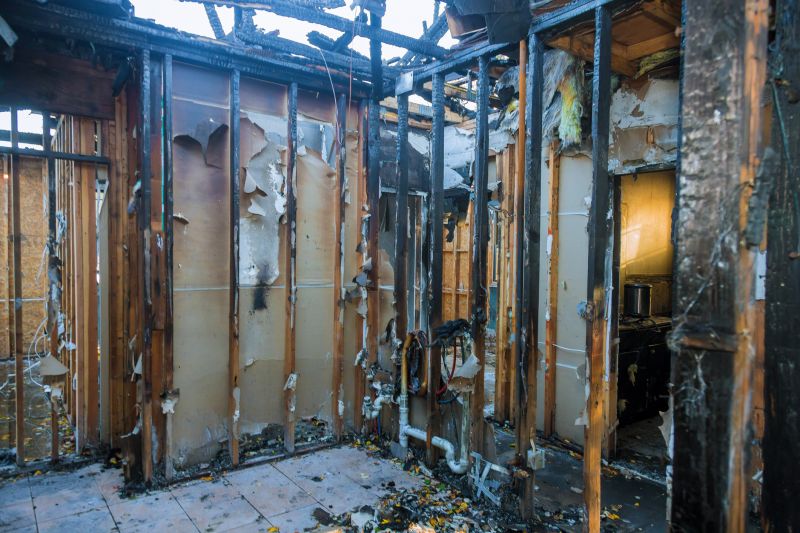Leading Fire Damage Restoration Products For Fast Results
Identify high-performance products designed to accelerate the fire damage cleanup and restoration process.
 Fire restoration is a critical process that involves repairing and restoring properties affected by fire damage. This process typically requires a combination of specialized cleaning, structural repairs, and odor removal to ensure a safe and livable environment. The selection of appropriate products plays a vital role in achieving effective results and minimizing further damage. From cleaning agents to protective equipment, each product contributes to a comprehensive restoration effort.
Fire restoration is a critical process that involves repairing and restoring properties affected by fire damage. This process typically requires a combination of specialized cleaning, structural repairs, and odor removal to ensure a safe and livable environment. The selection of appropriate products plays a vital role in achieving effective results and minimizing further damage. From cleaning agents to protective equipment, each product contributes to a comprehensive restoration effort.
Top Overall Option
Multi-purpose Fire Damage Restoration Kit
A comprehensive kit that includes a variety of cleaning agents, sealants, protective gear, and deodorizing solutions designed for versatility in fire damage scenarios. This all-in-one set offers essential tools for cleaning soot, neutralizing odors, and sealing surfaces to prevent future issues, making it suitable for both professional restorers and diligent homeowners. Its wide range of included products helps streamline the restoration process and ensures compatibility across different tasks.
Types of Products For Fire Restorations
Soot and Smoke Cleaners
Specialized solutions formulated to effectively break down and remove soot and smoke residues from various surfaces.
Odor Neutralizers
Products designed to eliminate persistent smoke odors from walls, fabrics, and air spaces.
Fire-Resistant Sealants
Sealants used to close gaps, cracks, and porous surfaces to prevent odor and smoke seepage.
Structural Adhesives and Fillers
Materials for repairing and reinforcing damaged walls, ceilings, and other structural elements.
Protective Gear
Personal protective equipment including masks, gloves, and suits to ensure safety during restoration work.
Air Scrubbers and Ventilators
Equipment used to improve indoor air quality by removing airborne soot particles and odors.
Cleaning Cloths and Sponges
Absorbent and scrubbing tools for manual cleaning of soot and smoke residues.
Dehumidifiers
Devices that help reduce moisture levels, preventing mold growth in fire-damaged areas.
Water Damage Absorbers
Products designed to absorb residual water resulting from firefighting efforts.
Fire-Resistant Paints
Coatings that provide a protective layer on surfaces to enhance fire resistance and conceal damage.
Electrostatic Sprayers
Tools for applying cleaning solutions evenly across surfaces for efficient soot removal.
Thermal Imaging Cameras
Devices used to detect hidden hotspots and assess damage areas during restoration.
Structural Repair Materials
Includes drywall, framing, and other building components suitable for fire-damaged structures.
Fireproof Storage Containers
Secure containers for storing important documents and valuables during restoration.
Electrical Repair Supplies
Components and tools for restoring electrical systems affected by fire damage.
Cleaning and Disinfecting Sprays
Products for sanitizing surfaces and preventing mold or bacteria growth post-fire.
Fire Damage Assessment Tools
Equipment used to evaluate the extent of damage and plan restoration strategies.
Popular Choices
Widely used for their effectiveness in cleaning soot from various surfaces.
Commonly employed to neutralize stubborn smoke odors.
Popular for ensuring safety during intense cleaning tasks.
Trending for their ability to improve air quality during restoration.
Frequently chosen for sealing porous surfaces and preventing odor seepage.
Essential in many restoration projects to control moisture levels.
Popular for manual soot and smoke residue removal.
Increasingly used to identify hidden damage areas.
Often selected for their comprehensive components for rebuilding.
Gaining popularity for their efficiency in applying cleaning solutions.
In demand for accurate damage evaluation.
Commonly used to manage residual moisture after firefighting.
Popular for safeguarding valuables during cleanup.
Often utilized to ensure sanitized surfaces post-cleaning.
Frequently needed for restoring electrical systems safely.
Restoration professionals often utilize a variety of tools and supplies designed specifically for fire-damaged environments. These include cleaning solutions that can break down soot and smoke residues, as well as sealants that prevent lingering odors from permeating surfaces. Proper ventilation equipment is also essential to facilitate air quality improvement during the restoration process.
Choosing the right products involves understanding the extent of the damage, the types of surfaces involved, and the safety considerations for both workers and occupants. High-quality, durable materials help ensure that repairs are long-lasting and that the property is restored to a condition that meets safety standards. It is important to select products that are compatible with each other to avoid chemical reactions and ensure smooth application.
In Boise, Idaho, fire restoration professionals and property owners alike seek reliable and effective products to manage the aftermath of fire incidents. Proper product selection can significantly influence the speed and quality of restoration, helping to return properties to their pre-damage state efficiently and safely.
Key Buying Considerations
- Type and extent of fire and smoke damage to determine suitable products.
- Compatibility of cleaning agents with different surfaces such as wood, drywall, or fabric.
- Safety features and certifications of protective gear and chemical products.
- Effectiveness of odor neutralizers for persistent smoke smells.
- Ease of application and user-friendliness of cleaning and repair tools.
- Durability and long-lasting properties of sealants and repair materials.
- Air quality improvement capabilities of ventilation and air purification equipment.
- Moisture control features in dehumidifiers and water absorbers to prevent mold growth.
- Availability of comprehensive kits versus individual products based on project scope.
- Cost considerations balanced with product quality and effectiveness.
- Environmental and health safety standards compliance.
- Brand reputation and customer reviews for reliability.
- Compatibility with existing tools and materials used in restoration.
- Size and quantity of products to match the scale of the damage.
- Shelf life and storage requirements of chemical products.
